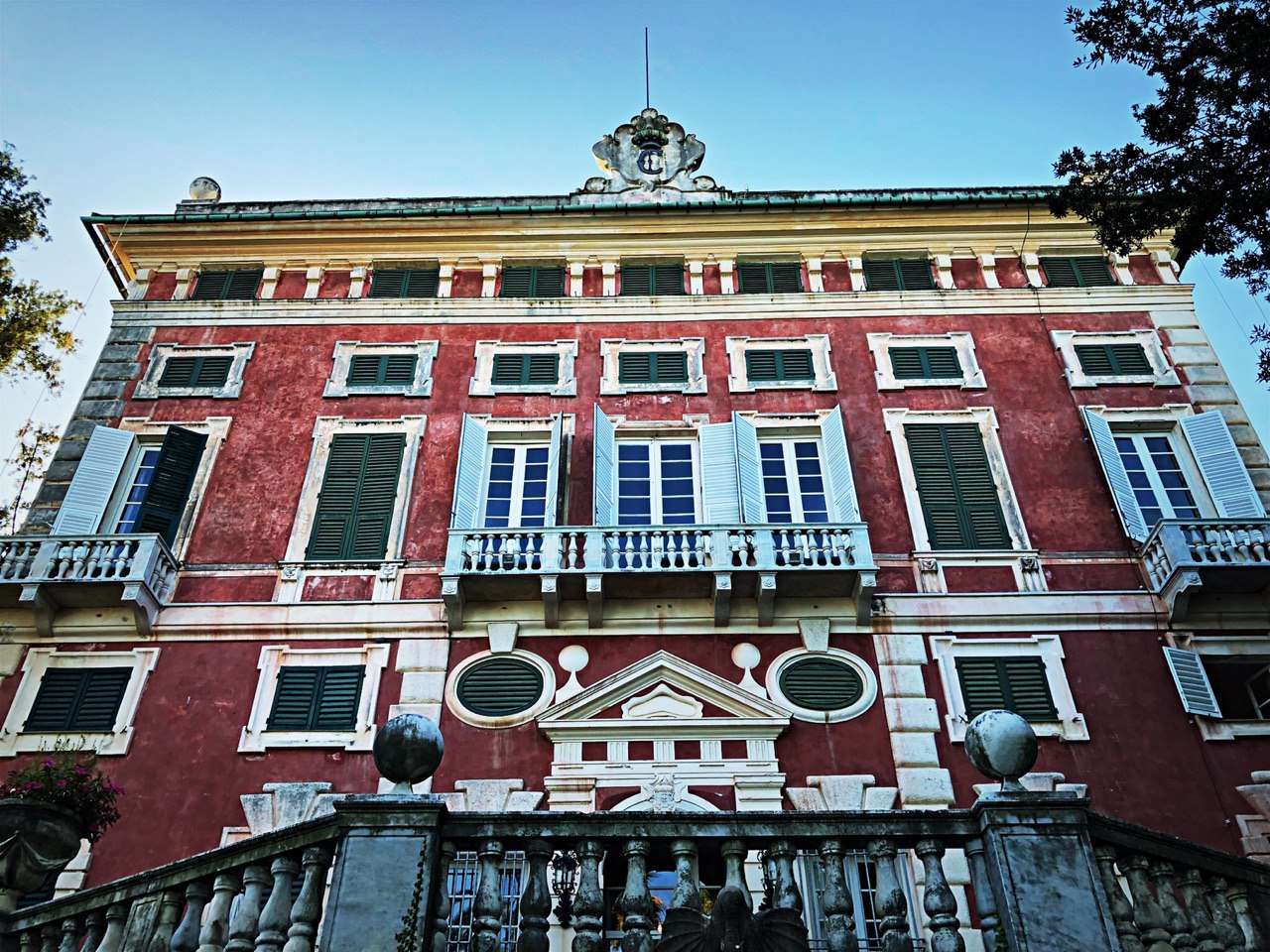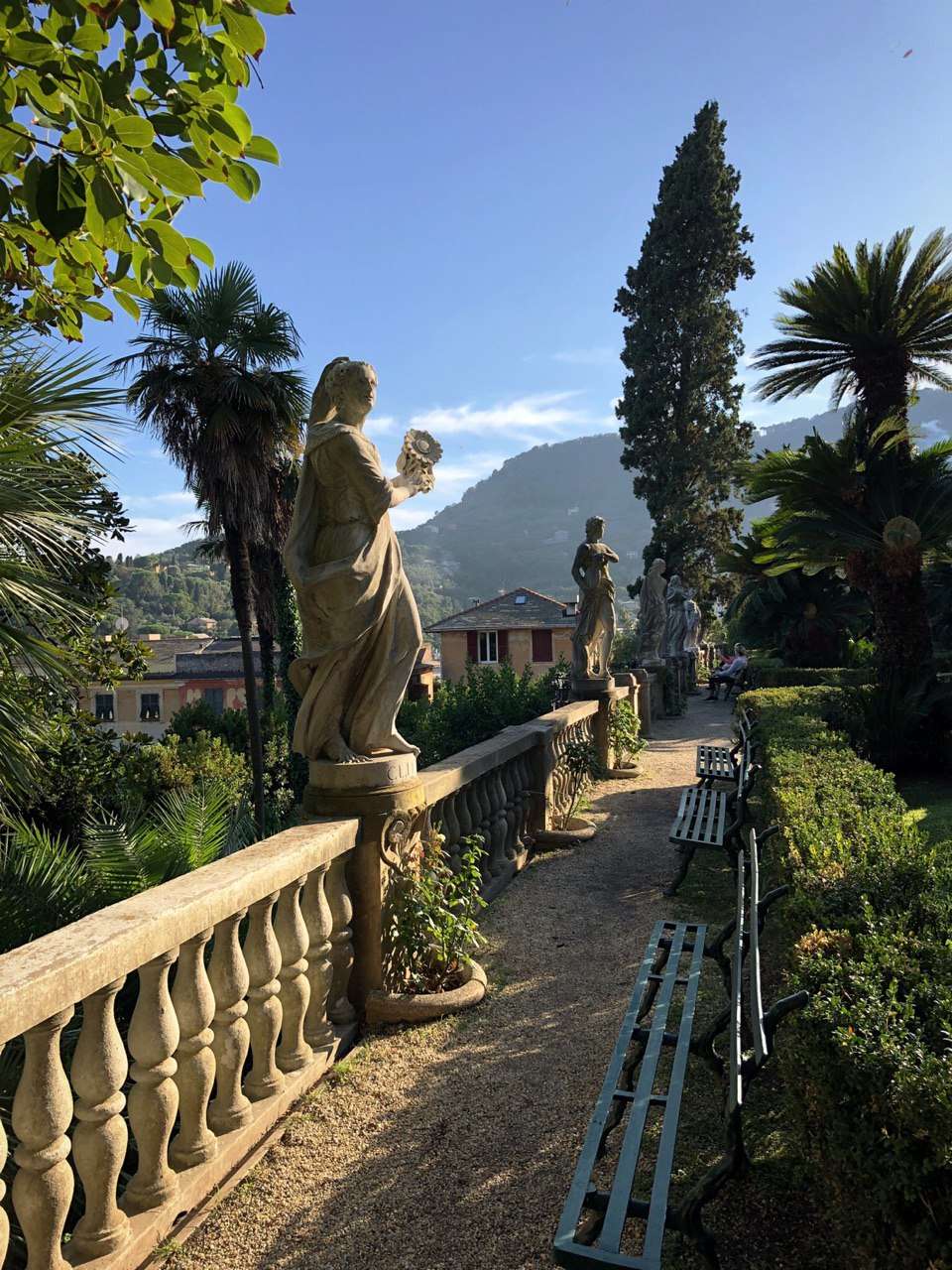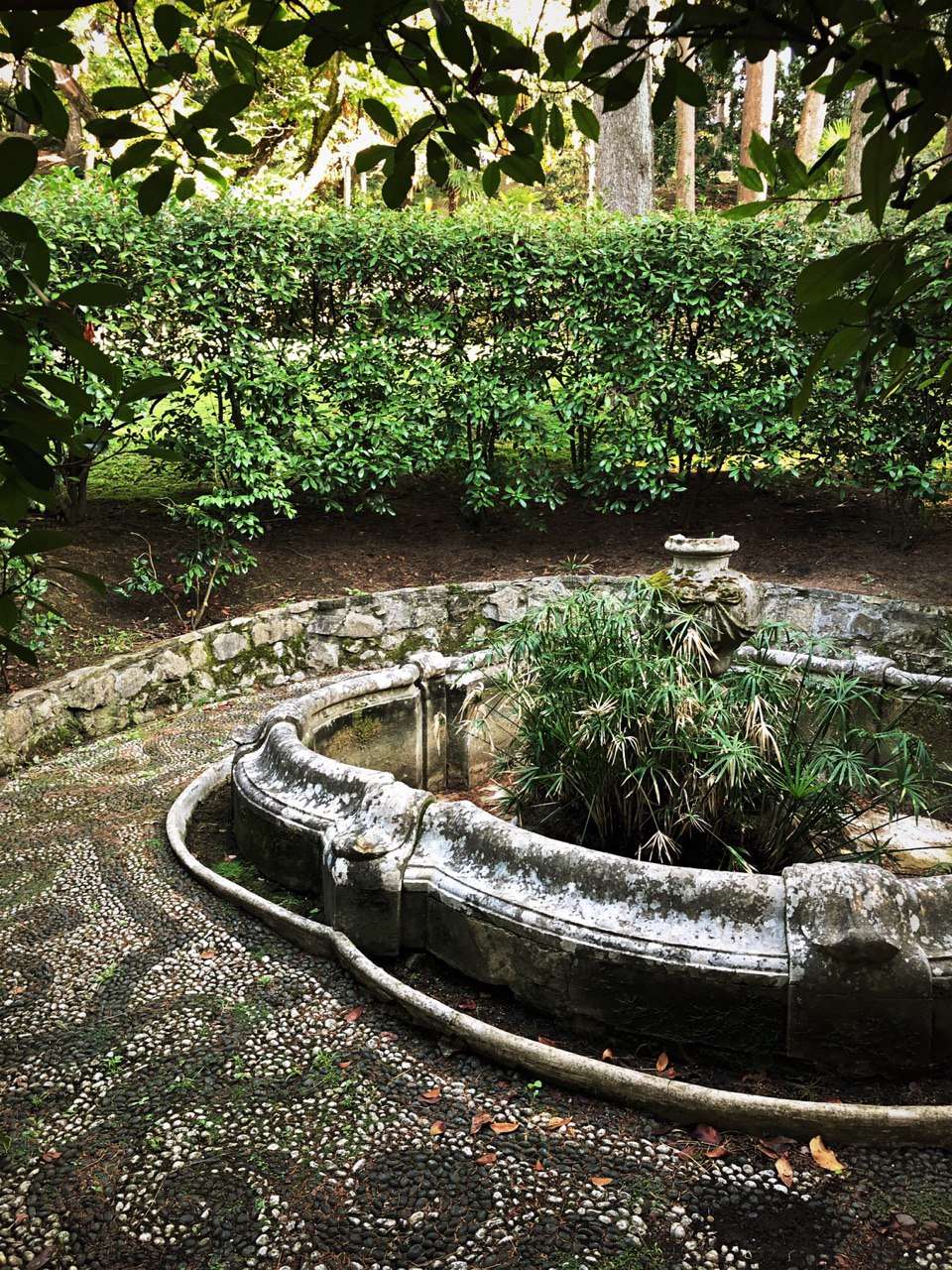Villa Durazzo: le statue e l'ombra

Un parco che si arrampica su una collinetta al centro di Santa Margherita, attorcigliandosi con tutti i suoi vialetti tra le statue e l’ombra degli alberi. In cima, una villa con vista mare dove spesso si tengono concerti e mostre.
L’edificio principale del parco è una costruzione alessiana a pianta quadrata edificata nel 1678 come residenza estiva della famiglia Durazzo sulla sommità del colle che separava l’abitato di Pescino da quello di Corte. Sulla stessa collina sono attestate anche costruzioni romane, risalenti al III secolo dopo Cristo. Originariamente l’edificio aveva la forma di un castello e faceva parte di una struttura difensiva contro le incursioni barbaresche ed i nemici della Repubblica di Genova, nel XVI secolo.
Il matrimonio tra Maria Chiavari, figlia del doge, e il marchese Gerolamo Durazzo segnò il passaggio “per Legato” della casa con torre dalla famiglia Chiavari alla famiglia Durazzo. Fu quindi Gio Luca Durazzo "dilettissimo" - figlio primogenito di Gerolamo - ad apportare le modifiche che le danno l’aspetto attuale. Nel 1678, abbattuto il castello in rovina, si intraprese il restauro e la radicale ristrutturazione del palazzo oggi esistente seguendo lo stile del celebre architetto Galeazzo Alessi, allo scopo di concedersi una villa "sollievo del corpo e dell’anima".
Nel 1821 la villa viene ceduta ai principi Centurione che ne ampliarono alcuni locali e arricchirono il parco con diverse piante esotiche e statue marmoree neoclassiche. Nel 1892, in occasione delle Celebrazioni Colombiane, la villa fu temporaneamente trasformata in Grand Hotel, ospitando personalità dell’aristocrazia internazionale, quali il principe di Wied e la regina Margherita di Savoia.
Nel 1919 fu acquistata dal commendatore Alfredo Chierichetti che rivalutò l'intero complesso aggiungendo nuove piante (palme, camelie e magnolie) e realizzando sentieri nel tipico ciottolato ligure detto risseu. Divenne infine proprietà comunale nel 1973 che destinò la villa e il suo parco a sede di importanti manifestazioni culturali e congressi internazionali.
Gli “Appartamenti del Piano Nobile” sono aperti al pubblico e possono essere visitati durante tutto l’anno. Le sale arredate con mobili d’epoca, contengono anche una preziosa quadreria di scuola genovese dei secoli XVII e XVVIII con opere di Domenico Piola, Giovanni Andrea De Ferrari, Luciano Borzone, Giovanni Enrico Vaymer, Cornelis de Wael, Giovanni Battista Paggi.
Questa è la storia di uno dei luoghi caratteristici di Santa Margherita Ligure, leggermente defilato e ombroso rispetto alle sfavillanti attrazioni mondane del centro. Molti cittadini comunque sono soliti passeggiare per i suoi vialetti, sotto lo sguardo delle statue ricoperte di muschio.
Villa Durazzo: the statues and the shadow

A little park that climbs a small hill in the center of Santa Margherita, twisting with all its paths between the statues and the shadow of the trees. At the top, a villa with sea view where concerts and exhibitions are often held.
The main building of the park is an alessian building with a square plan built in 1678 as a summer residence of the Durazzo family on the top of the hill that separated the town of Pescino from that of Corte. On the same hill are also attested Roman constructions, dating back to the third century A.D. Originally the building had the shape of a castle and was part of a defensive structure against the barbarian incursions and the enemies of the Republic of Genoa, in the XVI century.
The marriage between Maria Chiavari, daughter of the doge, and the marquis Gerolamo Durazzo marked the passage "by Legato" of the house with tower by the Chiavari family to the Durazzo family. It was therefore Gio Luca Durazzo "most beloved" - Gerolamo's eldest son - to make the changes that give it its current appearance. In 1678, when the ruined castle was demolished, the restoration and radical restructuring of the existing building was undertaken, following the style of the famous architect Galeazzo Alessi, with the aim of granting a villa "relief of body and soul".
In 1821 the villa was ceded to the Centurione princes who expanded some of them and enriched the park with various exotic plants and neoclassical marble statues. In 1892, on the occasion of the Colombian Celebrations, the villa was temporarily transformed into a Grand Hotel, hosting personalities from the international aristocracy, such as the Prince of Wied and Queen Margherita of Savoy.
In 1919 it was bought by Commendatore Alfredo Chierichetti who re-evaluated the entire complex by adding new plants (palms, camellias and magnolias) and creating paths in the typical Ligurian cobblestones called risseu. Finally, it became municipal property in 1973, which destined the villa and its park to host important cultural events and international congresses.
The "Noble Floor Apartments" are open to the public and can be visited throughout the year. The rooms furnished with period furniture also contain a precious collection of Genoese schools from the 17th and 18th centuries with works by Domenico Piola, Giovanni Andrea De Ferrari, Luciano Borzone, Giovanni Enrico Vaymer, Cornelis de Wael and Giovanni Battista Paggi.
This is the story of one of the characteristic places of Santa Margherita Ligure, slightly secluded and shady compared to the glittering worldly attractions of the center. Many citizens, however, are used to walking through its paths, under the gaze of statues covered with moss.